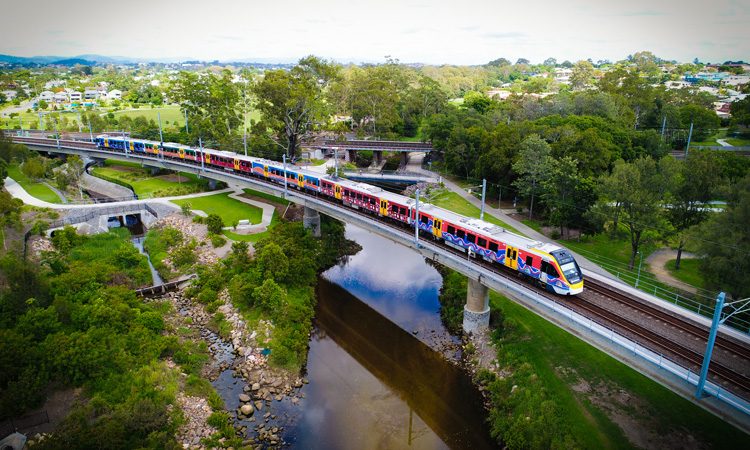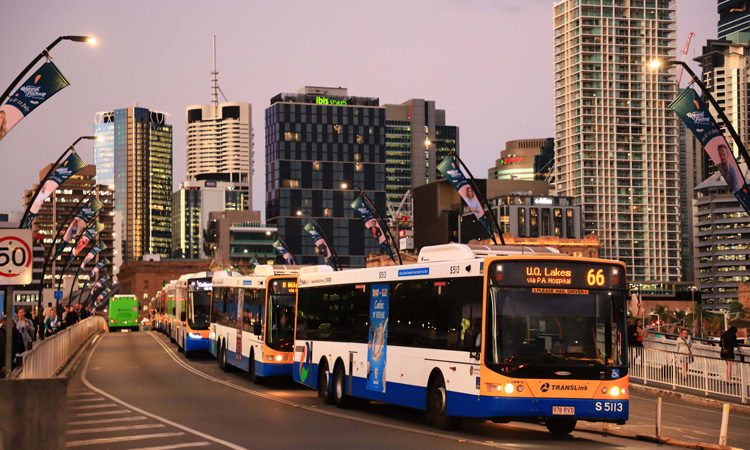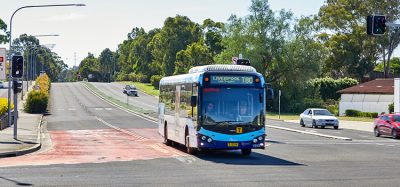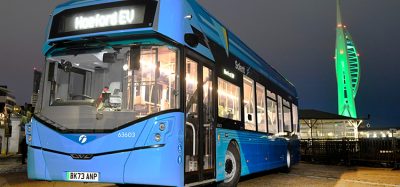How Queensland is earning its place among the smart ticketing elite
- Like
- Digg
- Del
- Tumblr
- VKontakte
- Buffer
- Love This
- Odnoklassniki
- Meneame
- Blogger
- Amazon
- Yahoo Mail
- Gmail
- AOL
- Newsvine
- HackerNews
- Evernote
- MySpace
- Mail.ru
- Viadeo
- Line
- Comments
- Yummly
- SMS
- Viber
- Telegram
- Subscribe
- Skype
- Facebook Messenger
- Kakao
- LiveJournal
- Yammer
- Edgar
- Fintel
- Mix
- Instapaper
- Copy Link
Posted: 9 December 2019 | Mark Bailey - Palaszczuk Labor Government | No comments yet
Intelligent Transport sat down with Queensland Transport and Main Roads Minister, Mark Bailey, to learn how the Australian state will touch the future of travel through one of the most advanced ticketing systems in the world, joining the likes of Singapore, New York, London and Chicago on the global stage.


What were the key drivers behind updating Queensland’s ticketing system?
It’s fair to say that innovation, customer functionality and inclusivity are the key drivers behind smart ticketing.
The Palaszczuk Labor Government’s smart ticketing project is a $371 million investment in designing, developing and implementing an innovative ticketing solution for Queensland, making it easier for customers to catch public transport by providing more options to plan and pay for their journey.
From Coolangatta to Cairns, we’re delivering a smart ticketing system that means all Queenslanders and those visiting our state will be able to use their smartphone, smartwatch, credit or debit card to easily catch public transport.
We have one shot at this project and it’s important we take the time to deliver a product that delivers benefits for our customers – and that means future-proofing it too
The system will also improve customer experience through the delivery of a new, intuitive customer mobile app, website and access to real-time service information.
It’s part of our $23 billion roads and transport commitment for Queensland over the next four years. This will help to create more than 21,500 jobs and adds to major public transport initiatives like the Cross River Rail project.
It’s a significant innovation investment for Queensland that will see us deliver a world-leading digital experience to public transport users. Queenslanders are increasingly using public transport, with a record 182 million trips taken in the state’s south east corner last year. It’s a big job, as it involves the replacement of more than 1,200 fixed devices and 12,000 on-board devices over the next four years to enable the new ticketing technology.
Back in 2008, we launched the highly successful and ever popular ‘go card’ – an electronic card-based ticketing system. The go card has been very good to us and continues to keep Queensland moving. However, that system is now more than 10 years old. As with all technology, it has an expiry date and doesn’t have the capability to keep up with our rapidly evolving customer needs and expectations.
In the last 10 years, ticketing and related technologies have developed rapidly and the transport sector has experienced major disruption as a result.
One of the great things about account-based ticketing – which is increasingly becoming the system of choice for the world’s major public transport operators – is that it will offer flexibility to implement new technology in a phased approach. It’s an adaptable, cost-effective, user-friendly system that will offer benefits to customers through greater choice, flexibility and control.
In today’s ever-changing digital world, the boundaries between technology and customer service continue to be blurred, allowing more personal connections for customers with the world around them. The smart ticketing initiative will use the most advanced global ticketing technology to deliver a more personalised public transport experience for our customers.
Ultimately, the smart ticketing programme will transform how Queenslanders plan, catch and pay for public transport. From journey planning to ticketing and connecting with our delivery partners, smart ticketing will deliver a state-of-the-art ticketing system that makes public transport more convenient and easier to use right across the state.
What is the greatest benefit the smart ticketing initiative has to offer?
We want to make it as easy and convenient as possible for our customers to use public transport. Users will no longer need to remember their go card to travel, or part with $20 every time they auto-top-up their cards – with smart ticketing you can genuinely pay as you go.
Users can use whichever payment method they have to hand. If they’re running low on savings one day, they can use a credit card the next. If they only take a smartphone with them on a night out, they have their mobile wallet to catch the bus into town. The smart ticketing app will know the best journey home, track a user’s safety and remember the train they accidentally left their favourite jacket on so they can reunite with it.
This applies to all of our customers. From daily commuters who catch the same train from the same spot on the same platform at the same time every day, to occasional users or visitors to the state, the simplicity and efficiency of smart ticketing will make it easier to move across the state from Coolangatta to Cairns.
Another benefit for customers will be the expansion of real-time technology across the state. That is a live tracking of services that allows users to know where it is and when it will arrive.
As a project, we are taking the time to get it right for Queensland – a state that is nearly five times the size of Japan, seven times the size of Great Britain, and two and a half times the size of Texas.
It’s a four-year delivery programme with a phased approach to both testing and delivery to ensure optimal customer experience and a seamless transition. We have one shot at this project and it’s important we take the time to deliver a product that delivers benefits for our customers – and that means future-proofing it too.
What is the biggest challenge you face in delivering smart ticketing to passengers?
One of the biggest challenges over the next four years is to balance the demands of maintaining a functional legacy system for customers while delivering a world-class digital ticketing system for the future.
Smart ticketing isn’t a quick fix – it’s an extensively researched, vetted, meticulously procured and planned system delivery that will be progressively rolled out.
While we’re very much in the detailed design phase of the project, we’re well aware of the challenges presented by everything new; new systems, new training and new processes juxtaposed against a firm timeline of delivery. We are focused on getting this right and ensuring the transition is a seamless one for our customers.


How have you ensured that inclusivity is a core driver of smart ticketing?
A world-class ticketing system should be functional, accessible and user-friendly for everyone. It is critical the smart ticketing project ensures anyone can easily touch on, touch off or purchase tickets and identify where to do so.
We are undertaking extensive customer engagement and testing with a broad range of accessibility and advocacy groups at every step of the project to ensure we have an intimate understanding of our customers’ needs and how to meet them.
Remembering that it’s not all that often you get to roll out a new system, the smart ticketing initiative also provides the opportunity to do things better. One of our lessons learnt from the go card system was that the ticketing infrastructure and equipment was difficult to locate and didn’t stand out enough visually.
The smart ticketing project presented the opportunity to explore a new visual identity for the project, which was a really fun process. We undertook extensive market research with a particular focus on identifying and testing colours to represent smart ticketing that would be easily identified on ticketing infrastructure by people with varying abilities, including colour limitations. Through this process we were able to narrow down a colour palette based on existing global colour research for visibility.
We are undertaking extensive customer engagement and testing with a broad range of accessibility and advocacy groups at every step of the project to ensure we have an intimate understanding of our customers’ needs and how to meet them
We then used eye-line tracking technology to test people’s time to focus, duration of focus and frequency of focus on the brand in three different colours. Participants were also asked to provide prompted recall information so that results could be drawn about the effectiveness of the logo colour on ticketing equipment.
The result is that the brand’s pink colour palette was the most accessible and inclusive colour for people with varying abilities to identify and locate, especially on ticketing infrastructure. Moreover, the Cooktown orchid pink far outperformed alternate colour options through market research testing with respect to gaining, maintaining and regaining customer attention.
The smart ticketing project brand is bold, embodies Queensland’s vibrant personality and is a true reflection of the innovative, inclusive ticketing solution we are delivering for Queenslanders.
Biography
Mark Bailey is Queensland’s Transport and Main Roads Minister in the Palaszczuk Labor Government and the local member for Miller. He was elected to state parliament in January 2015 and has delivered major transport projects including the $420 million Gold Coast Light Rail Stage Two and $163 million Coomera to Helensvale Rail Duplication. As part of the Palaszczuk Government, he is helping to deliver the $5.4 billion Cross River Rail project, which will build a new 10.2km rail line, four new underground stations and unlock opportunities for more frequent public transport for Queenslanders.
Related topics
Intelligent Transport Systems (ITS), IoT (Internet of Things), Passenger Accessibility, Ticketing & Payments
Issue
Issue 3 2019
Related cities
Queensland
Related organisations
The Palaszczuk Labor Government








